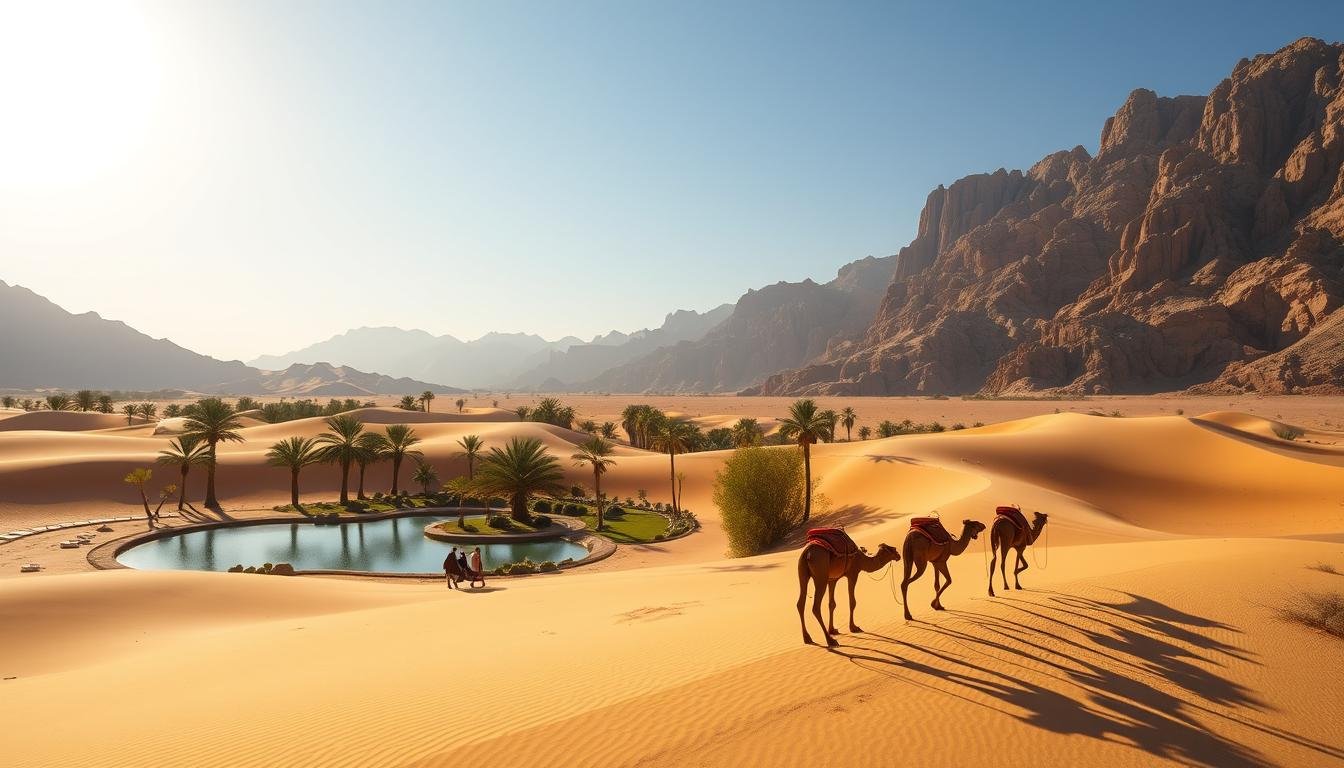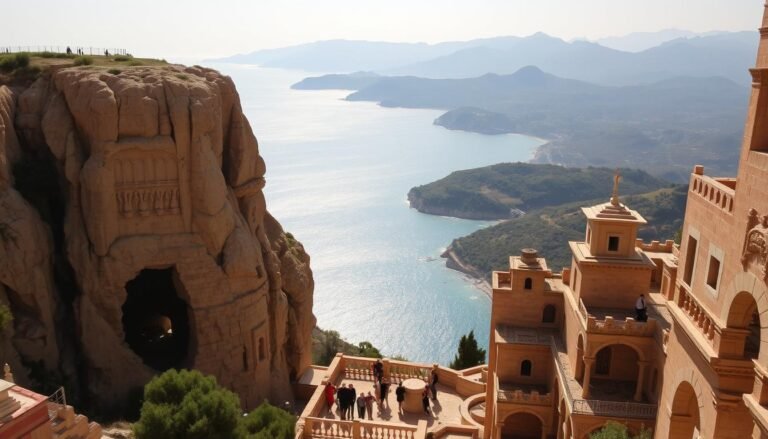Explore the best time to visit Oman and enjoy its stunning landscapes,culture,and unique experiences
The best time to visit Oman: Oman is a captivating destination that offers a mix of natural beauty, rich cultural heritage, and unique experiences. Understanding when to visit Oman is crucial to enjoying its diverse landscapes, from vast deserts to pristine coastlines.
The country’s climate is reliably warm, making it an ideal destination for travelers. The ideal temperatures between October and April make it the perfect time for outdoor adventures and cultural explorations.
A guide to visiting Oman will help you determine the ideal time for your trip based on weather patterns and regional variations. Whether you’re planning a family vacation or an outdoor adventure, knowing the best time to visit will ensure you make the most of your Omani experience.
Understanding Oman’s Climate and Geography
The unique geography of Oman results in a range of climates, from the arid desert to the lush Dhofar region. Oman’s diverse landscapes, including mountains, deserts, and coastlines, contribute to the varied climate conditions across the country.
Desert Climate and Coastal Influences
Oman’s desert climate is characterized by hot temperatures during the summer months, while the coastal regions experience a milder climate due to the moderating influence of the sea. The coastal areas are generally more humid than the inland regions.
Regional Weather Variations
The Dhofar region in southern Oman is known for its unique monsoon season, known as the khareef, which occurs from June to September. This period brings significant rainfall and transforms the region into a lush, green landscape. In contrast, the northern regions, including Muscat, experience a more typical desert climate with hot summers and mild winters.
| Region | Climate Characteristics | Best Time to Visit |
|---|---|---|
| Northern Oman (Muscat) | Hot summers, mild winters | October to April |
| Dhofar Region | Lush during monsoon (khareef), June to September | June to September for khareef |
| Central Deserts | Extreme temperature variations | October to March |
Understanding these regional weather variations is crucial for determining the best time to visit Oman. While one region may be experiencing extreme heat, another might offer pleasant conditions for travelers.
The Best Time to Visit Oman: October to April Overview
The period from October to April is regarded as the peak season for visiting Oman, offering pleasant weather and numerous activities. This duration is considered the best time to explore Oman’s diverse landscapes, from the mountains to the desert.
Temperature and Weather Conditions
October marks the beginning of the cooler months in Oman, making it an ideal time to visit. The weather remains balmy and warm during the day, with minimal rainfall. As the months progress, the temperatures continue to be pleasant, creating a perfect environment for outdoor activities.
The comfortable climate during this period is particularly enjoyable for visiting Oman‘s natural wonders, such as the Al Hajar Mountains and the Wahiba Sands desert. It’s an ideal time for hiking, camping, and exploring the country’s natural beauty.
Ideal Activities During Peak Season
During the October to April peak season, Oman offers a wide range of activities that showcase its diverse landscapes and cultural heritage. Some of the experiences include:
- Desert adventures in Wahiba Sands, with comfortable daytime temperatures and magical starlit nights.
- Hiking and mountain exploration in the Al Hajar range, with clear skies offering spectacular views.
- Cultural sightseeing in cities like Muscat and Nizwa, made more comfortable without the summer heat.
- Wildlife viewing opportunities, such as dolphin watching and spotting rare Arabian oryx.
This comprehensive guide to Oman’s peak season highlights the country’s versatility as a travel destination, catering to various interests and preferences.
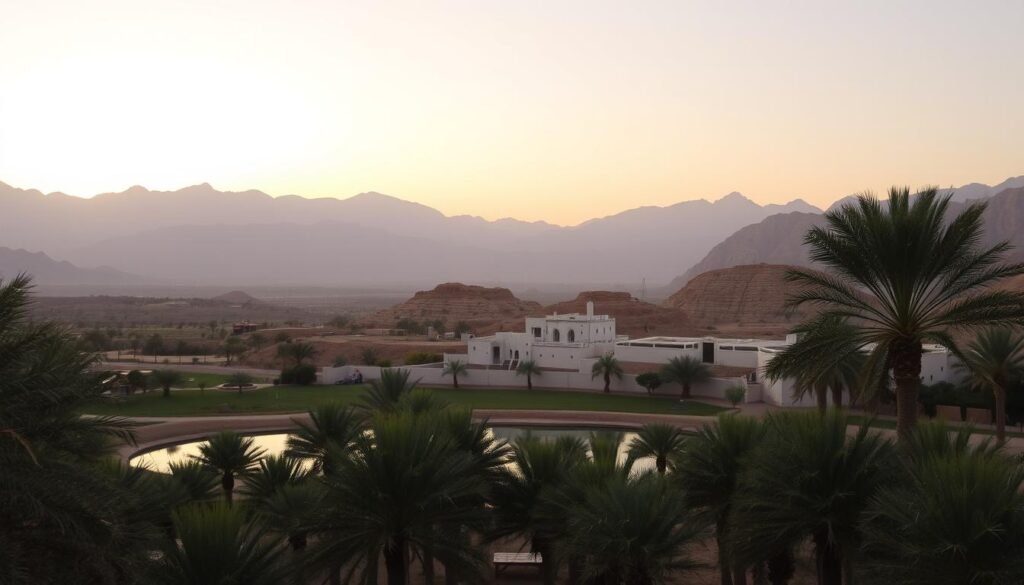
Month-by-Month Guide to Visiting Oman
A month-by-month guide to visiting Oman reveals the best times to enjoy the country’s varied landscapes and cultural experiences. Understanding the climate and weather conditions throughout the year is key to planning a memorable trip.
Winter Months: December to February
Winter in Oman is characterized by mild temperatures, making it an ideal time for outdoor activities such as hiking in the Al Hajar Mountains and exploring the desert landscapes of Wahiba Sands. Daytime temperatures range from 20-28°C (68-82°F), while nights can be cooler, especially in the desert regions.
Spring Season: March to May
Spring is a lovely time in Oman, with comfortable temperatures and the landscape is lush from winter rains. It’s a great period for visiting historical sites, enjoying water activities, and experiencing the local culture. Temperatures gradually warm up, reaching 30-38°C (86-100°F) by May.
Summer Heat: June to August
Summer is extremely hot in Oman, with temperatures often exceeding 45°C (113°F) in the desert areas. It’s a challenging time for outdoor activities, but the coastal regions offer some respite. Visitors can enjoy indoor attractions or relax on the beautiful beaches.
Autumn Transition: September to November
Autumn marks a welcome transition from the summer heat to more moderate temperatures. October is particularly pleasant, with comfortable daytime temperatures (25-34°C/77-93°F) and cool evenings, making it ideal for hiking, desert adventures, and other outdoor pursuits.
| Month | Temperature Range (°C) | Activities |
|---|---|---|
| December to February | 20-28 | Hiking, Desert Exploration |
| March to May | 25-38 | Historical Sites, Water Activities |
| June to August | 35-45+ | Indoor Attractions, Beach Relaxation |
| September to November | 25-34 | Hiking, Desert Adventures |
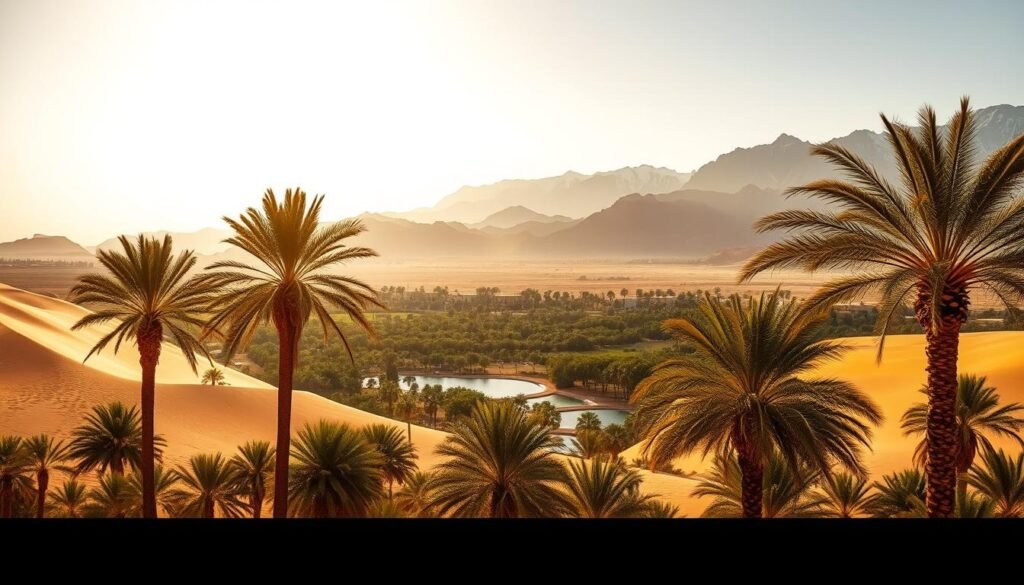
Regional Climate Guide: Where to Go When
Oman’s diverse geography means that different regions have distinct climate conditions, making some areas more suitable to visit at certain times of the year. Understanding these regional variations is crucial for planning an optimal trip.
Muscat and Northern Oman
Muscat, the capital, experiences a hot desert climate. The best time to visit is from October to April when temperatures are relatively mild, making it ideal for exploring the city’s attractions.
Salalah and the Dhofar Region
Salalah, in southern Oman, has a unique climate due to its location. The Khareef season (June to September) transforms the area into a lush landscape, attracting visitors looking for a cooler climate during the summer months.
Al Hajar Mountains and Jebel Akhdar
The Al Hajar Mountains, including Jebel Akhdar, offer cooler temperatures than the lowlands throughout the year. March and April are ideal for witnessing the Damask rose harvest, with the terraced slopes covered in fragrant blooms.
| Region | Best Time to Visit | Climate Characteristics |
|---|---|---|
| Muscat and Northern Oman | October to April | Mild temperatures, ideal for city exploration |
| Salalah and Dhofar Region | June to September | Lush landscape due to Khareef season, cooler summer |
| Al Hajar Mountains and Jebel Akhdar | March to April, October to April | Cooler temperatures, ideal for hiking and rose harvest |
Seasonal Natural Phenomena in Oman
From the monsoon season in Salalah to turtle nesting in Ras Al Jinz, Oman offers a range of natural wonders. The country’s diverse geography and climate give rise to various seasonal phenomena that attract tourists and nature enthusiasts alike.
Khareef Monsoon Season in Salalah
The Khareef monsoon season transforms Salalah into a lush green paradise during the summer months. The region experiences a unique microclimate, with cool breezes and misty landscapes, making it a refreshing escape from the heat.
Turtle Nesting and Hatching at Ras Al Jinz
Ras Al Jinz is a crucial nesting ground for endangered green sea turtles from June through September. Female turtles emerge at night to lay eggs, while hatchlings make their perilous journey to the sea. The Ras Al Jinz Turtle Reserve offers guided viewing experiences that balance wildlife observation with conservation.
- The beaches become a nesting ground for turtles during the summer.
- Night viewing sessions allow visitors to observe turtles laying eggs.
- Early morning visits often showcase hatchlings emerging from the sand.

Cultural Festivals and Events Throughout the Year
Oman is a country that celebrates its rich cultural heritage through various festivals and events throughout the year. These events offer a glimpse into the country’s history, traditions, and values, making them an exciting experience for visitors.
Muscat Festival
The Muscat Festival, held in January and February, is one of Oman’s most significant cultural events. It features traditional music, dance performances, and local handicrafts, attracting visitors from across the region.
Rose Harvest in Jebel Akhdar
The rose harvest in Jebel Akhdar is a centuries-old tradition that takes place in March and April. During this time, the mountain terraces are filled with Damask roses, which are harvested early in the morning to create the prized Omani rosewater.
- The rose harvest transforms the mountain terraces into fragrant pink and red carpets.
- Local farmers harvest the delicate Damask roses when their essential oils are most concentrated.
- Visitors can observe the traditional distillation process used to create Omani rosewater.
- Guided tours offer opportunities to interact with local farmers and learn about traditional methods.
Best Outdoor Activities by Season
From desert safaris to mountain hiking, Oman is a paradise for outdoor enthusiasts, with the best experiences available from October to March.
Desert Adventures in Wahiba Sands
The Wahiba Sands desert tour in Oman is a must-do experience, offering thrilling adventures like dune bashing, camel riding, and camping under the stars. The best time for this activity is between October and March, when the temperatures are more bearable.
The cooler weather allows visitors to fully enjoy the vast expanse of the Wahiba Sands, exploring its majestic dunes and experiencing the tranquility of the desert landscape.
Hiking and Mountain Exploration
Oman’s Al Hajar Mountains offer some of the best hiking experiences, with the October to March period providing ideal conditions. Popular destinations include Jebel Shams, the rim of “Oman’s Grand Canyon” (Wadi Ghul), and the ancient village-connecting trails of Jebel Akhdar.
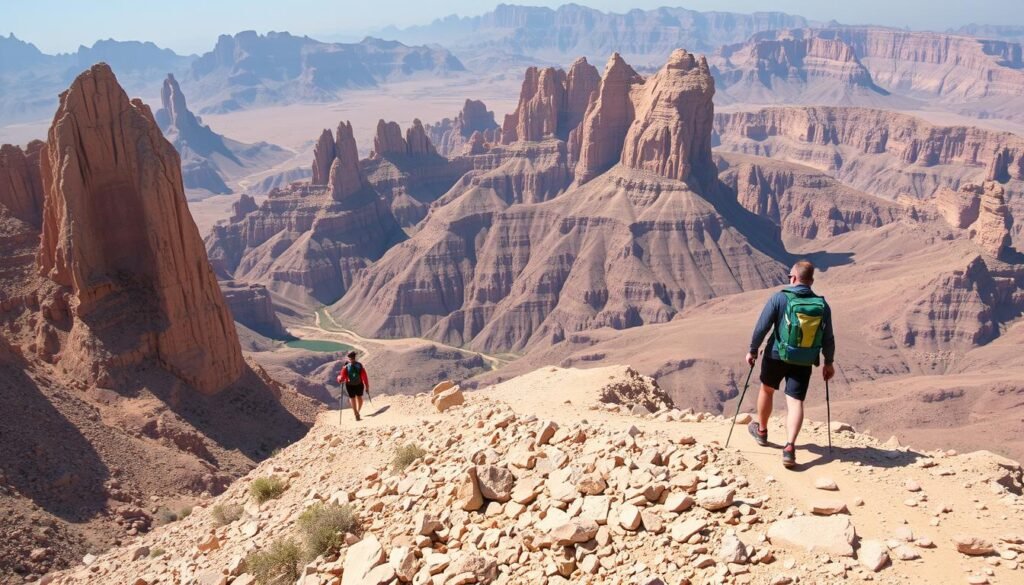
The cooler season enables hikers to undertake full-day hikes without the risk of heat exhaustion, though early starts are recommended for longer routes. The trails often pass through traditional villages and ancient sites, combining natural beauty with cultural experiences.
Water Activities and Marine Life: When to Go
With its extensive coastline and rich marine biodiversity, Oman is an ideal destination for water sports enthusiasts and nature lovers alike. The country’s marine environment offers a wide range of experiences, from snorkeling and diving to simply enjoying the beautiful beaches.
Snorkeling and Diving (September-January)
The period from September to January is considered the best time for snorkeling and diving in Oman. During these months, the sea is calm, and the water temperature is pleasant, making it ideal for exploring the underwater world. Popular spots include the Daymaniyat Islands and the Musandam Peninsula, known for their coral reefs and diverse marine life.
Beaches and Coastal Experiences
Oman’s beaches offer year-round appeal, with the optimal beach experience varying by season and location. From October to April, northern Oman enjoys comfortable beach weather, perfect for sunbathing and swimming. The Musandam Peninsula is best visited from October to May, when clear skies enhance its dramatic fjord-like coastline. In contrast, Salalah’s beaches are ideal during the khareef season (June-September), offering a cooler alternative to the rest of the country.
Planning Tips for Different Types of Travelers
Oman is a versatile destination that caters to various types of travelers, from families to adventure seekers. When planning your trip to Oman, consider what you want to experience during your visit.
Family Travel Considerations
For families, Oman offers a range of activities suitable for all ages. The best time to visit Oman with family is during the cooler months from October to April, making it ideal for outdoor explorations.
Adventure Seekers and Outdoor Enthusiasts
Adventure travelers will find the period from October to April ideal for Oman’s diverse outdoor activities. The shoulder months (October-November and March-April) offer comfortable temperatures and fewer tourists, making them particularly suitable for active adventures.
| Traveler Type | Best Time | Activities |
|---|---|---|
| Families | October to April | Outdoor explorations, cultural visits |
| Adventure Seekers | October to April | Hiking, desert adventures, water activities |
Conclusion: Making the Most of Your Visit to Oman
Oman offers a rich travel experience throughout the year, with the best time to visit Oman being a key factor in enjoying its many attractions.
The period between October and April is considered ideal, with warm temperatures ranging from 17°C to 35°C (63°F to 95°F), making it perfect for various activities.
Understanding the regional and seasonal variations allows visitors to experience Oman’s highlights, from the rose harvest in spring to the khareef season in summer.
Whether you’re drawn to wildlife encounters, cultural festivals, or outdoor adventures, Oman’s diverse landscapes and cultural richness cater to all interests.
With proper planning, you can craft an unforgettable Omani experience that showcases the country’s remarkable diversity and hospitality.

